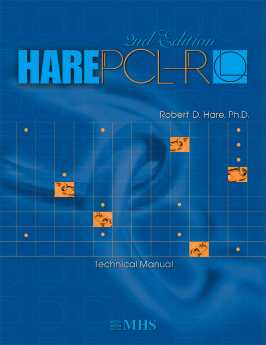
Suicide prevention is a collection of efforts to reduce the risk of suicide. Suicide is often preventable, and the efforts to prevent it may occur at the individual, relationship, community, and society level. Suicide is a serious public health problem that can have long-lasting effects on individuals, families, and communities. Preventing suicide requires strategies at all levels of society. This includes prevention and protective strategies for individuals, families, and communities. Suicide can be prevented by learning the warning signs, promoting prevention and resilience, and committing to social change.
The TeenScreen National Center for Mental Health Checkups at Columbia University was a national mental health and suicide risk screening initiative for middle- and high-school age adolescents. On November 15, 2012, according to its website, the program was terminated. The organization operated as a center in the Division of Child and Adolescent Psychiatry Department at Columbia University, in New York City. The program was developed at Columbia University in 1999, and launched nationally in 2003. Screening was voluntary and offered through doctors' offices, schools, clinics, juvenile justice facilities, and other youth-serving organizations and settings. As of August 2011, the program had more than 2,000 active screening sites across 46 states in the United States, and in other countries including Australia, Brazil, India and New Zealand.
Irritability is the excitatory ability that living organisms have to respond to changes in their environment. The term is used for both the physiological reaction to stimuli and for the pathological, abnormal or excessive sensitivity to stimuli.
Suicide intervention is a direct effort to prevent a person or persons from attempting to take their own life or lives intentionally.

Suicidal ideation, or suicidal thoughts, means having thoughts, ideas, or ruminations about the possibility of ending one's own life. It is not a diagnosis but is a symptom of some mental disorders and can also occur in response to adverse events without the presence of a mental disorder.
Suicide risk assessment is a process of estimating the likelihood for a person to attempt or die by suicide. The goal of a thorough risk assessment is to learn about the circumstances of an individual person with regard to suicide, including warning signs, risk factors, and protective factors. Risk for suicide is re-evaluated throughout the course of care to assess the patient's response to personal situational changes and clinical interventions. Accurate and defensible risk assessment requires a clinician to integrate a clinical judgment with the latest evidence-based practice, although accurate prediction of low base rate events, such as suicide, is inherently difficult and prone to false positives.

The Psychopathy Checklist or Hare Psychopathy Checklist-Revised, now the Psychopathy Checklist—revised (PCL-R), is a psychological assessment tool that is commonly used to assess the presence and extent of the personality trait psychopathy in individuals—most often those institutionalized in the criminal justice system—and to differentiate those high in this trait from those with antisocial personality disorder, a related diagnosable disorder. It is a 20-item inventory of perceived personality traits and recorded behaviors, intended to be completed on the basis of a semi-structured interview along with a review of "collateral information" such as official records.
Youth suicide is when a young person, generally categorized as someone below the legal age of majority, deliberately ends their own life. Rates of youth suicide and attempted youth suicide in Western societies and other countries are high. Youth suicide attempts are more common among girls, but adolescent males are the ones who usually carry out suicide. Suicide rates in youths have nearly tripled between the 1960s and 1980s. For example, in Australia suicide is second only to motor vehicle accidents as its leading cause of death for people aged 15–25, and according to the National Institute for Mental Health, suicide is the third leading cause of death among teens in the United States.

The Beck Anxiety Inventory (BAI), created by Aaron T. Beck and other colleagues, is a 21-question multiple-choice self-report inventory that is used for measuring the severity of anxiety in adolescents and adults ages 17 and older. The questions used in this measure ask about common symptoms of anxiety that the subject has had during the past week. It is designed for individuals who are of 17 years of age or older and takes 5 to 10 minutes to complete. Several studies have found the Beck Anxiety Inventory to be an accurate measure of anxiety symptoms in children and adults.

Suicide is the act of intentionally causing one's own death. Mental disorders, physical disorders, and substance abuse are risk factors. Some suicides are impulsive acts due to stress, relationship problems, or harassment and bullying. Those who have previously attempted suicide are at a higher risk for future attempts. Effective suicide prevention efforts include limiting access to methods of suicide such as firearms, drugs, and poisons; treating mental disorders and substance abuse; careful media reporting about suicide; and improving economic conditions. Although crisis hotlines are common resources, their effectiveness has not been well studied.
Self-embedding is the insertion of foreign objects either into soft tissues under the skin or into muscle. Self-embedding is typically considered deliberate self-harm, also known as nonsuicidal self-injury, which is defined as "deliberate, direct destruction of tissues without suicidal intent."

Depression is a mental disorder characterized by prolonged unhappiness or irritability, accompanied by a constellation of somatic and cognitive signs and symptoms such as fatigue, apathy, sleep problems, loss of appetite, loss of engagement; low self-regard or worthlessness; difficulty concentrating or indecisiveness; or recurrent thoughts of death or suicide. Depression in childhood and adolescence is similar to adult major depressive disorder, although young sufferers may exhibit increased irritability or behavioral dyscontrol instead of the more common sad, empty, or hopeless feelings seen with adults. Children who are under stress, experiencing loss, or have other underlying disorders are at a higher risk for depression. Childhood depression is often comorbid with mental disorders outside of other mood disorders; most commonly anxiety disorder and conduct disorder. Depression also tends to run in families. In a 2016 Cochrane review cognitive behavior therapy (CBT), third wave CBT and interpersonal therapy demonstrated small positive benefits in the prevention of depression. Psychologists have developed different treatments to assist children and adolescents suffering from depression, though the legitimacy of the diagnosis of childhood depression as a psychiatric disorder, as well as the efficacy of various methods of assessment and treatment, remains controversial.

Gender differences in suicide rates have been shown to be significant. There are different rates of suicides and suicidal behavior between males and females. While females more often have suicidal thoughts, males die by suicide more frequently. This discrepancy is also known as the gender paradox in suicide.

The CRAFFT is a short clinical assessment tool designed to screen for substance-related risks and problems in adolescents. CRAFFT stands for the key words of the 6 items in the second section of the assessment - Car, Relax, Alone, Forget, Friends, Trouble. As of 2020, updated versions of the CRAFFT known as the “CRAFFT 2.1” and "CRAFFT 2.1+N" have been released.
The SAD PERSONS scale is an acronym utilized as a mnemonic device. It was first developed as a clinical assessment tool for medical professionals to determine suicide risk, by Patterson et al. The Adapted-SAD PERSONS Scale was developed by Gerald A. Juhnke for use with children in 1996.

The Columbia Suicide Severity Rating Scale, or C-SSRS, is a suicidal ideation and behavior rating scale created by researchers at Columbia University, University of Pennsylvania, University of Pittsburgh and New York University to evaluate suicide risk. It rates an individual's degree of suicidal ideation on a scale, ranging from "wish to be dead" to "active suicidal ideation with specific plan and intent and behaviors." Questions are phrased for use in an interview format, but the C-SSRS may be completed as a self-report measure if necessary. The scale identifies specific behaviors which may be indicative of an individual's intent to kill oneself. An individual exhibiting even a single behavior identified by the scale was 8 to 10 times more likely to die by suicide.
The relationship between antidepressant use and suicide risk is a subject of medical research and has faced varying levels of debate. This problem was thought to be serious enough to warrant intervention by the U.S. Food and Drug Administration to label greater likelihood of suicide as a risk of using antidepressants. Some studies have shown that the use of certain antidepressants correlate with an increased risk of suicide in some patients relative to other antidepressants. However, these conclusions have faced considerable scrutiny and disagreement: A multinational European study indicated that antidepressants decrease risk of suicide at the population level, and other reviews of antidepressant use claim that there is not enough data to indicate antidepressant use increases risk of suicide.
The 9-question Patient Health Questionnaire (PHQ-9) is a diagnostic tool introduced in 2001 to screen adult patients in a primary care setting for the presence and severity of depression. It rates depression based on the self-administered Patient Health Questionnaire (PHQ). The PHQ is part of Pfizer's larger suite of trademarked products, called the Primary Care Evaluation of Mental Disorders (PRIME-MD). The PHQ-9 takes less than 3 minutes to complete and simply scores each of the 9 DSM-IV criteria for depression based on the mood module from the original PRIME-MD. Primary care providers frequently use the PHQ-9 to screen for depression in patients.

The Attribution Questionnaire (AQ) is a 27-item self-report assessment tool designed to measure public stigma towards people with mental illnesses. It assesses emotional reaction and discriminatory responses based on answers to a hypothetical vignette about a man with schizophrenia named Harry. There are several different versions of the vignette that test multiple forms of attribution. Responses assessing stigma towards Harry are in the form of 27 items rated on a Likert scale ranging from 1 to 9. There are 9 subscales within the AQ that breakdown the responses one could have towards a person with mental illness into different categories. The AQ was created in 2003 by Dr. Patrick Corrigan and colleagues and has since been revised into smaller tests because of the complexity and hypothetical that did not capture children and adolescent's stigmas well. The later scales are the Attribution Questionnaire-9 (AQ-9), the revised Attribution Questionnaire (r-AQ), and the children's Attribution Questionnaire (AQ-8-C).
Suicide and trauma is the increased risk of suicide that is caused by psychological trauma.







